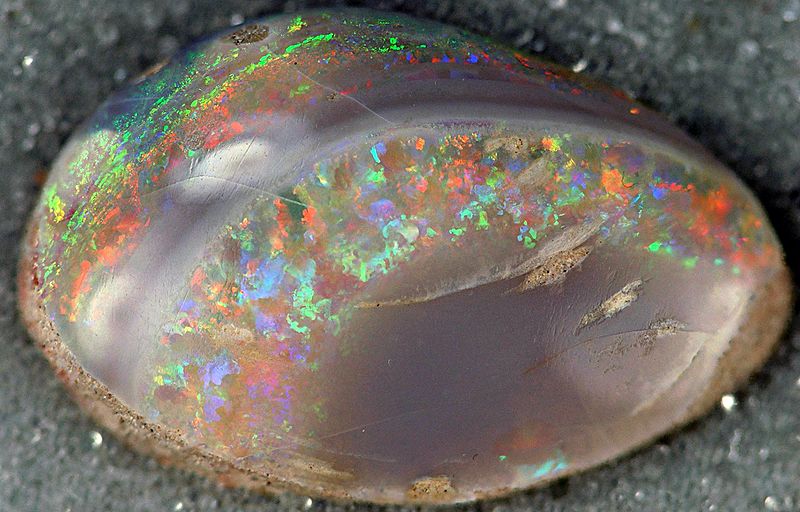Image: Opalized fossil bivalve, Coober Pedy Opal Field, South Australia

Description: Opalized bivalve from the Coober Pedy Opal Field, South Australia. The Coober Pedy area of southern Australia is world-famous for its high-quality precious opal (= hydrous silica - SiO2·nH2O). Some of the opal at Coober Pedy (pronounced “koober peedee”) has replaced fossil skeletal material. Most of the opalized fossils here are various marine bivalve (clam) species, but Coober Pedy opal replaces other fossil remains as well (for example, snails, belemnites, crinoids, ichthyosaurs, and plesiosaurs). Even soft parts have been preserved & replaced by opal (Kear, 2006). The specimen shown here is a polished fossil clam that may be assignable to Cyrenopsis (?) (Animalia, Mollusca, Bivalvia, Heterodonta, Veneroida, Arcticaceae, Neomiodontidae). Locality: unrecorded mine field in Coober Pedy Opal Field, north-central South Australia State, southern Australia. Stratigraphy: “weathered zone” of the Bulldog Shale, lower Marree Subgroup, Aptian Stage, upper Lower Cretaceous. Reference cited: Kear, B.P. 2006. Marine reptiles from the Lower Cretaceous of South Australia: elements of a high-latitude cold-water assemblage. Palaeontology 49: 837-856.
Title: Opalized fossil bivalve, Coober Pedy Opal Field, South Australia
Credit: Opalized fossil bivalve (Bulldog Shale, Lower Cretaceous; Coober Pedy Opal Field, South Australia) 07
Author: James St. John
Usage Terms: Creative Commons Attribution 2.0
License: CC BY 2.0
License Link: http://creativecommons.org/licenses/by/2.0
Attribution Required?: Yes
Image usage
The following page links to this image:

